What Are The Best Markers For Adult Coloring Books?
Posted by 3five Support on
If you love adult coloring books as much as we do, you'd know that markers are a dream to work with.
Markers are unique because they make illustrations pop out of the page with their vibrant pigments and blending capabilities.

There's just one tiny hiccup: not all markers out there are created equal.
There are some markers that don't blend well, while the good ones can be pretty expensive.
We know that testing each and every brand out there can be a daunting task, so we took one for the adult coloring community and reviewed the top markers for you!
We searched high and low, watched and read numerous reviews and blog posts just to get an idea of what colorists want in a perfect marker.
The result?
A comprehensive list that breaks down the top 9 marker brands in the market today. It discusses their pros, cons, and everything in between.
Which marker proved to be a cut above the rest? Here's a quick look at how each marker performed:
The Best Markers For Adult Coloring Books At A Glance
How We Did Our Review

Before we dive right into the reviews, here's a quick look at how we did our testing.
After a thorough selection process, we ended up with 9 of the best brands in the market today. What's interesting is we got both high, mid and low-end brands, as well as a mix of both alcohol and water-based markers.
We then cataloged each marker's physical attributes, making sure to check if they were ergonomic and easy to use.
We tested out the nibs and the kind of strokes they made, before swatching each marker to check the consistency of their colors.
Next, we tested out their buildability by gradually adding one layer of color on top of another to see if you can create different shades with a single marker. This test also showed us how much the markers bled through the paper, how much feathering was present and if they damaged the paper in the process.
We also did a smudge test where we used the markers to lay strokes over a black felt-tip pen. This way, you’ll know which markers are great for coloring your own illustration.

The most important and interesting test was, of course, the blending test. We took two to three colors of each marker brand and had a field day blending them together. We did bold, straight strokes as well as circular ones to test out their versatility. We also noted the smoothness of the color transition and the quality of the pigments when blended. Needless to say, this test was our favorite as it showed each marker's potential and capability.
For all the tests, we used thick artist-quality paper to get the best results. We also colored a mandala using the markers on this list so you can see their differences and similarities side-by-side. Note that we didn't include Copic in this mandala since we only had the skin tone set for that particular brand.

Take note that aside from performance, we also considered the price point and the packaging of each brand.
Now that we've got that out of the way, let's get to the fun part: the reviews!
COPIC

Let’s start off with the big guns...or in this case, the biggest name in coloring markers: Copic.
These markers apparently work like a charm, and die-hard fans claim that they’re smooth, easy to use and very, very, very blendable. They also cost a small fortune, so the question is: are these qualities worth burning through your savings?
Initial Findings
For this review, we used the Copic Ciao marker 12-piece skin tone set. These dual-ended, alcohol-based markers fetch for around $55/set online. Yes, we can hear your heart breaking at the price, too. Ours sure did.
To put things in perspective, 12 Copic markers are equal to 72 Bianyo markers.
Let that sink in for a bit.
The markers come in a nice and solid acrylic casing that’s meant to give them a little home on your desk. They're not very travel-friendly though, as they could break and don't close securely.

Looking at the markers you’ll see that they’re your regular, round barrel type. You get two nibs: one end has a brush nib and the other, a chisel nib, which is quite a different combination from the other dual-ended markers in this list. Looking at the barrel, you'll see that there are labels to indicate which tip is which. Color codes can be found on the marker body as well.
The skin tone pack is composed of warm tones like beige, peaches, and browns. It's obviously quite limited and if you wish to have more, you will have to invest in a 36- or 72-piece set (which is about a few dollars shy of $200).
What makes everything somewhat better is that these markers are actually refillable. They're expensive, but if you can afford them, Copic markers can be a sort of investment.
Ink and Application
 Let’s just get this one out of the way: Copics work like a dream and they create beautiful swatches.
Let’s just get this one out of the way: Copics work like a dream and they create beautiful swatches.
Most of the shades in this palette are understated skin tones, so they're obviously not the bright or vibrant variety, but what's great about them is the fact that they're extremely buildable. This means that you can truly see the difference between each layer. There's something about its formula that makes them dry quicker when applied, so each stroke yields just the right amount of pigment. It’s as if the marker wants you to slowly but surely achieve your shade of choice. Since it builds very well, you can use the same marker to create different shades and can mix and match color combinations to your heart's desire.
It also doesn't bleed through your paper until several layers in, and feathering is at a bare minimum. 
Blending, especially when using the brush tip, is great. Those raving fan testimonials? They’re not exaggerating. While the chisel nib works okay, it’s the brush tip that does the magic. It makes the colors meld together seamlessly. It's easily controllable with the right amount of firmness: it's not too flimsy that you won't be able to control it, but it's not too rigid that it limits your flexibility.
The pack also comes with its own colorless blender, which is a great addition to this set.
Our Verdict
Let's be honest: critiquing a Copic on its capability to color is like critiquing Meryl Streep on her capability to act. The markers really are great in a lot of aspects, especially blending.
Perhaps the only negative thing about these Copic markers is the price point. It's insanely expensive.
Are you willing to spend $200 on a full set of markers? While these markers are dreamy and are wonderful to work with, not everybody can afford that steep price point. Their hefty price tag is meant for professional colorists and experienced enthusiasts. You can always slowly buy one marker at a time, which could take awfully long and is not fun at all.
Until then, we think it would make sense to look at other more affordable brands that perform just as well without you having to break the bank.
COLORIT

It’s not a secret that we at ColorIt take pride in our products. Being a pioneer in premium adult coloring books, we’ve developed coloring materials specially made to cater to the adult coloring community’s needs. We’ve got regular and glitter gel pens, color pencils and of course, a premium set of markers that our customers seem to love...if our consistent 5-star ratings in Amazon are any indication.
Still, we want to look at our markers from the consumer’s point of view, so we put our objective caps on and tested our products right alongside the others. Here’s what we observed:
Initial Findings
First, ColorIt’s 50-marker set comes complete with its own traveling case. Unlike most of the other marker brands on this list, this is the only set that comes with a nice and solid traveling case. The case allows you to carry your markers around or lay them horizontally so that they can last longer. They’re great whether you’re on the road or at home.
These markers are alcohol-based and dual-ended, having both chisel and fine point nibs. The color codes and color names appear at the tip of the marker caps. The caps close securely so you don’t accidentally pop them open.

The markers have a soft, triangular shape to keep them from rolling off of surfaces. You’d think that they’d be difficult to use but they’re actually quite ergonomic and don’t feel bulky in your hand at all.
The set has a lot of vibrant hues, but nothing too flashy or fluorescent. Think of it as a predominantly pastel palette with some solid and dark colors thrown in. There's a nice selection of grays and neutrals as well as cool greens and blues. The selection of colors is well-balanced, so you don’t get too much of the same shade. These markers are also open stock, meaning you don’t have to buy the entire set in case one or two markers run dry.
Ink and Application
 The chisel tip takes a bit of getting used to, especially if you want to evenly cover a lot of space. The fine point tip works great and really lets you work on the details of each illustration.
The chisel tip takes a bit of getting used to, especially if you want to evenly cover a lot of space. The fine point tip works great and really lets you work on the details of each illustration.
The markers also give off a strong scent---something that’s quite common among other alcohol-based markers.
Here’s one thing that we shamelessly love about our markers: their blending capability is great for their price point. At only $49.99, they’re one of the more affordable markers in this list, but the way that the colors blend would make you think that you’re using a premium set.
The consistency of the pigment is great, so your strokes appear smooth and even on the page. Blending them gives off this beautiful matte finish, so the transitions look good, even when you’re using the darker shades. 
The markers work best wet on wet. You can definitely build the colors up--- you can start from really subdued tones and add more layers to produce a darker shade. The colors do look pretty much the same after the 5th coat, but feathering is surprisingly down to a minimum.
What’s great is that they don’t damage the paper even as you add multiple layers. These markers do bleed through the paper, so make sure to use a blotter page when coloring.
Our Verdict
If you want to make the biggest bang for your buck, ColorIt is the way to go. The 50-marker set obviously has less variety than, say, a 72-piece or 80-piece set, but what it lacks in quantity, it makes up for quality--- big time.
With its relatively affordable price, you can already get a set of markers that yields great results, plus a traveling case that lets you take your markers wherever you go. It’s got the best price-performance ratio out of all the brands that we reviewed. The colors are very buildable, and blending results are similar to the high-end markers in this list. The only difference is that you won’t be breaking the bank when you get them.
PRISMACOLOR

When we came up with this list, we made sure to include a variety of high, mid and low-end brands. Prismacolor is definitely located at the higher end of the art supply spectrum. The brand is notable for its colored pencils, but their markers have also been making decent rounds among the art community so we thought, hey, let’s put them to the test!
These markers are alcohol-based, non-refillable and have dual tips: one ends in a brush, while the other ends in a fine point. For this review, we got the 24-piece set, which is available at around $50. 24 markers obviously don't offer the same variety as a 50 or 100-piece set. Is it better to have a limited set of premium markers, or should you just get yourself a cheaper brand with more colors?
Here's what we found out:
Initial Findings
The Prismacolor markers come in a padded black case that screams "professional" even at first glance. Aside from ColorIt, they’re the only brand to have a traveling case that really impressed us. The markers also lie horizontal while on the case, which is great if you want to extend their lifespan.
Most of the palette is made up of bright, basic colors like poppy red (PB-13) and grass green (PB-165). That being said, don't expect to find a lot of tertiary colors in this set. Subdued or light neutrals are also limited, if not absent altogether.

The markers have a black body, with a nice matte feel. They're definitely wider and denser than the Crayolas or Tombows (which we’ll review below), but the grip is still awesome.
As mentioned earlier, the markers are dual-ended. You can tell which end is which by looking at the body: a straight line near the tip indicates the fine point nib, while a wavy line curling around the other end indicates the brush nib. The cap also shows the color and color code of each marker. It shuts with a satisfying snap, which means it won't accidentally open or come off.
Ink and Application
 Here are two words to best describe the Prismacolor markers: dense pigments.
Here are two words to best describe the Prismacolor markers: dense pigments.
The colors are bright and saturated and more or less match with the label at the end of each cap. They bleed a lot and have a strong smell, but they also dry faster than most markers in this list.
The fine tip is nice and solid, giving you clean, precise lines. You don't feel it squishing or blotting under the pressure of your hand. The brush tip is very versatile and has just the right amount of give. It's pliant enough to create delicate strokes, but it's not uncomfortably soft, either. You can use the brush to cover large areas and small details alike. 
Perhaps the best thing about the Prismacolor markers is that they're also very blendable. Although most of the colors are vibrant and solid, their blend is still excellent. The colors transition seamlessly from one shade to another. As long as you lay even strokes, streakiness won't be a problem.
You can build the colors, too; adding one layer after the other makes the color more vibrant without doing any damage to your paper.
Our Verdict
All things considered, the best thing about the Prismacolor markers is that their colors are strong and vibrant without compromising blendability. The downside is that this set didn’t offer a lot of variety in terms of colors.
Being premium professional markers, their high price point can be a pain, too. If you want to have more markers, you’ll have to be ready to spend more. Due to their pigmentation, the markers can be quite bleedy as well, so make sure to only use premium paper when using these markers.
OHUHU

If you regularly watch art channels and vlogs (like we do), you’ll notice that Ohuhu is a brand often touted as an affordable alternative to Copic. These markers are pretty cheap at only $40 for an 80-piece set. Are they really the next best thing to Copics? Our testing said otherwise.
Initial Findings
At roughly 50 cents a marker, Ohuhu markers are perhaps the cheapest alcohol-based markers in this list.
The presentation and packaging bear a stark resemblance to the Bianyo markers (reviewed further down the list). Their case is made of a flimsy material that leaves the markers all bunched up inside. Organizing the markers inside the bag? Unfortunately, not a very pleasant experience.
The marker barrel is a cross between the round barrel variety and the square, angular kind. It's flatter with softer edges, but it’s not fully round as well. We found it awkward in the hand, especially when using the chisel tip.

It’s a dual-tipped marker and you can tell where the fine tip end is by the gray band near the tip.
Color codes and labels can be found on top of each cap. What's funny is that the codes are arbitrary--- some markers have alphanumeric codes while the others are just labeled with numbers. You can’t infer anything from those codes and the color on the cap doesn’t match the actual marker color, so it’s best to swatch them beforehand.
This set had a lot of green shades as well as fluorescent markers that can serve as highlighters. Upon swatching, we noticed that there are a lot of near-dupes in this set, such as markers 52 and 54 (deep green and viridian, respectively). The colors are so similar that you can hardly tell them apart, even after swatching.
Based on their looks, they bear no resemblance to Copics. Maybe the similarities lie in the application? Let’s see.
Ink and Application
 Sadly, Ohuhu markers are a hit-and-miss when it comes to application.
Sadly, Ohuhu markers are a hit-and-miss when it comes to application.
On one hand, blending lighter and cooler shades together is a breeze. If you use the right combination, you'll more or less get a smooth and even transition, which is pretty impressive considering that Ohuhu is on the lower end of the price spectrum. This works really well when using skin tones and cool, subdued blues or peaches.
Blending darker shades is an entirely different story, though. If the lighter shades blend smoothly, the darker ones tend to be patchy. We’re thinking that this is perhaps due to the consistency of the  markers. While the color outcome is great, the consistency of the pigment itself is kind of runny. It also takes a bit longer to dry. Using them on a coloring page ended up smudging the lines, something that didn't happen with other markers in this list.
markers. While the color outcome is great, the consistency of the pigment itself is kind of runny. It also takes a bit longer to dry. Using them on a coloring page ended up smudging the lines, something that didn't happen with other markers in this list.
Our Verdict
When used with the right color combination, Ohuhu markers do blend well. If you know what you're doing, you can really achieve decent, even excellent results with this marker. It’s just a shame that their packaging isn’t as good as the performance of the markers (the package’s label says “Made in Chian” instead of “China,” which was at least three different levels of disappointing).
Are they truly Copic dupes? They’re good, sure, but comparing them to Copic markers is kind of a long shot.
FABER-CASTELL

Faber-Castell, one of the world's oldest art supply brands, has always been associated with premium art materials. Their PITT artist pens are especially popular. These pens use india ink, a waterproof, odorless and lightfast material. Could these pens be the perfect coloring tools out there.
Initial Findings
The packaging alone screams ultra-premium: the markers come in a luxurious olive box that closes with a magnetic flap. Open them and you'll see the PITT pens, arranged by shade, complete with a welcome insert. We’ll be honest, this simple touch gives an extra oomph to the overall look and product experience.
We got the 24-piece set of pens, which is made up of a nice selection of colors. It has a great variety of secondary and tertiary colors as well as skin tones and grays.

It's important to note that the PITT pens come in a variety of nibs. You can see the type of nib indicated at the top of each cap. In our case, our caps say "B" for brush tips, but there are other types of nibs out there.
Being pens and not markers, they’re smaller and more slender than most coloring materials featured in this list. Another thing that sets them apart is that these pens use india ink, which is waterproof, bleed-proof and odorless. It sounds like a pipe dream but after running some tests, we found that these claims are wonderfully true.
Ink and Application
 India ink is pigment-based so it's got unique properties. When we got to testing, we found out that it really doesn’t smudge or bleed and doesn’t have any funky smell.
India ink is pigment-based so it's got unique properties. When we got to testing, we found out that it really doesn’t smudge or bleed and doesn’t have any funky smell.
On top of that, the ink is also waterproof and is one of the richest ones in this list, especially when it's still wet. The brush glides smoothly along the paper, giving you this traditional art kind of feel.
The darker colors appear solid and saturated, but they do become more subdued when it dries. The neutrals and lights appear patchy on the first run though, so make sure to lay additional strokes evenly. We didn’t like the ivory shade, which actually appeared more yellow than white or beige. 
We found that the colors blend best when done wet on wet. This technique yields great results color-wise but since the pigment stays on top of the page instead of being absorbed by the paper, it can lead to some paper damage.
That being said, we observed that the pens don't dry as fast as the alcohol markers, especially if you use them on glossy paper like the ones we used during testing. They’re quite similar to water-based markers in this case but are a tad better at blending.
Our Verdict
Undoubtedly premium in price and in looks, the Faber-Castell PITT artist pens are for the serious artist indeed. The colors are beautiful and rich but since they don't dry as fast as alcohol based markers do, they will damage your paper if you're not careful enough. They’re made for illustrations and drawings made on a thicker kind of paper.
And like any other premium set out there, these pens cost a lot, too.
All in all, the PITT artist pens are great if you know how to use them, but we won’t recommend them for beginner colorists.
BIANYO

Producing art supplies like markers, pens, and brushes since 2007, Bianyo believes in delivering quality art materials for a lesser price. How do they hold up against the other marker brands on this list?
Initial Findings
At only around $40 for a set of 72 markers, Bianyo is one of the cheaper alcohol-based markers in this review, second only to its cousin Ohuhu.
These markers are alcohol-based, non-refillable and dual-ended with chisel and fine points. There is great variety and distribution of colors in this set, including a wide array of warm skin tones, neutrals, and grays, as well as a colorless blender.
Our set had a lot of yellow shades that we initially thought some markers to be dupes. Don’t worry--- upon swatching we realized that they weren’t duplicates, but they did look pretty similar to each other. It makes us wonder: do you get the same combination of colors or do you get a different variety for every set?

The markers come in a black traveling case which is honestly, not very impressive as far as cases go. Like we mentioned in the Ohuhu review above, the bag is flimsy and doesn’t support the markers well. If you take a bunch of markers out of the bag, the rest of the markers will just fall on top of each other. It’s a challenge to organize these markers inside the bag. It would be better if the bag had more structure.
Looking at the markers themselves, you’d see that they are made of glossy plastic material. Something more matte would have given them a more professional look. On the upside, it’s quite easy to recognize the marker tips since nib indicators are printed on the marker body. You can also see a black ring around the fine tip end. The color codes at the end of each marker cap are likewise easy to understand (WG for warm grays, CG for cool grays, etc).
The markers have a square barrel, designed to prevent them from rolling off surfaces. While this shape has its advantages, it also makes the grip kind of awkward, especially when using the chisel tip at an angle.
Ink and Application
 Upon application, we found the fine tip nice and solid. The pigment is not as eye-popping as we expected, but it does hold its own. Just make sure to swatch them beforehand: the colors are brighter on first application and can look different and more subdued once they've dried.
Upon application, we found the fine tip nice and solid. The pigment is not as eye-popping as we expected, but it does hold its own. Just make sure to swatch them beforehand: the colors are brighter on first application and can look different and more subdued once they've dried.
As mentioned above, there were a lot of yellow markers in this bunch, so much so that we ended up with a lot of near-identical shades. That’s a common issue when you get a lot of markers. You can actually just build two to three shades with the same marker, instead of needing a different one. But then again, if you like warm colors, go have fun!
The markers don’t bleed much, which is a great thing. It's just that the colors become less buildable as you add more layers. In this case, the 4th coat pretty much looks the same as the 6th one. Blending is pretty average. It’s not as  smooth as we’d like and the transitions from one shade to another can sometimes appear patchy.
smooth as we’d like and the transitions from one shade to another can sometimes appear patchy.
We also found a lot of feathering along the edges of the strokes. The markers don't dry as fast as the other brands in this list, so make sure to wait a couple of seconds before adding in another layer to prevent damage to your paper and achieve best results.
Our Verdict
In conclusion, we think that the Bianyo markers are pretty average. The best thing about them is the affordable price point and variety of colors. Aside from that, they didn’t dazzle us much. We found the square barrel uncomfortable, especially if you’re using the chisel tip and making circular strokes. They could definitely do better in terms of packaging, especially with their traveling case.
TOMBOW

Tombow brush pens are often used for calligraphy and lettering, but it’s been said that they can be used for coloring as well. How do these water-based brush pens fare against their alcohol-based counterparts?
Initial Findings
Tombow brush pens are water-based and are dual-tipped: one end has a brush nib while the other end has a fine point nib. For this review, we got the "Brights" pack, a set of ten brush pens mostly composed of primary and secondary colors.

The brush pens are longer and more slender than alcohol-based markers, likely because they're made for calligraphy. Looking at the body of the pen you'll see color labels and color codes. The cap also corresponds to the color of the pen. The brush end has a bigger cap, so there's no mistaking which end is which.
Ink and Application
 The pens are nice and light in the hand. We kind of expected the brush tip to be soft and pliant like the other brush-tipped markers, but to our surprise, it was actually firmer. This is an advantage because it allows you more control of the pen.
The pens are nice and light in the hand. We kind of expected the brush tip to be soft and pliant like the other brush-tipped markers, but to our surprise, it was actually firmer. This is an advantage because it allows you more control of the pen.
Being waterbased, you can expect a bit of streakiness from these pens. Thankfully, they make up for it by giving beautiful, solid colors. You can definitely build them, but as always with water-based markers, you have to allow a few seconds for the layer to dry before adding another one to prevent paper damage.
For blending, it's important to remember that water-based brush pens don’t work the same as alcohol-based markers.
For you to blend these colors together, you have to use other techniques and tools. One such tool is the colorless blender, which is included in this marker pack. We think that it's a nice addition to the palette since it allows you to create more subdued, gradient effects. It takes a bit of practice, but it's a whole lot of fun to work with. 
Another way to blend with your Tombows is by using a wet brush. You can also dip the brush pens in water or touch a lighter brush tip with a darker one to create a nice, ombre effect. That being said, coloring may not be the best application for these brush pens. Tombows work best when used with water so you’d need a thicker kind of paper, preferably watercolor paper to really have fun with it.
Our Verdict
All in all, these pens look, feel and perform great. It’s got great pigment and overall quality. The thing is, they may not be best suited for adult coloring books. They’ll most likely damage your coloring pages. These pens are best used for calligraphy and water coloring, so save them for those kinds of art projects. For coloring though, better stick to alcohol-based markers.
SHARPIE

Over the years, Sharpies have been synonymous to permanent markers. We use them to label just about anything--- from moving-day boxes to school projects to leftover Chinese food containers. We know that they work, but can they also be used with adult coloring books? Let’s find out.
Initial Findings
For this review, we got the Colorburst pack, which is a set of 24 markers. The set is mostly composed of basic colors as well as some tertiary shades. There's one gray and brown marker thrown into the set as well. Like the Crayola Supertips (reviewed below), these markers are single-tipped but are capable of producing both narrow and thick strokes, depending on how you tilt them.
As you might’ve guessed, Sharpies are alcohol based and are permanent. We bet you could tell from the tell-tale alcohol marker smell and the "permanent marker" label proudly printed along the barrel.

The markers come in a standard cardboard and plastic packaging. You can't use this to store your markers so make sure you have a container or case handy for these.
The caps indicate the marker colors, which more or less match with the actual pigment. They also shut nice and tight.
Ink and Application
 Sharpies are known for their vibrant colors, and that clearly showed when we ran our tests. The markers are highly pigmented; they bleed a lot and feather moderately though, so make sure to always use a blotter page when using these markers. The colors are somewhat buildable, but you can't see much difference towards the last couple of layers.
Sharpies are known for their vibrant colors, and that clearly showed when we ran our tests. The markers are highly pigmented; they bleed a lot and feather moderately though, so make sure to always use a blotter page when using these markers. The colors are somewhat buildable, but you can't see much difference towards the last couple of layers.
The nib is solid and rigid---great for labeling and writing, but maybe a tad too hard for coloring. It's  not versatile enough for blending. They do work to a certain extent, but more often than not, the results were patchy, especially if you have to cover a lot of space.
not versatile enough for blending. They do work to a certain extent, but more often than not, the results were patchy, especially if you have to cover a lot of space.
You can get a flat and matte effect for sure, but if you want fluid shading, there are better markers in this list to do the job.
Our Verdict
The great thing about a Sharpie marker is that you know it won't ever fade easily, and it's relatively cheap. The downside is that it's not that refined when it comes to blending and that their scent is so strong. In conclusion, we say stick to the Sharpie when you need to label things like moving boxes but leave the coloring to the better markers out there.
CRAYOLA SUPERTIPS

Anyone who's ever colored as a kid will know Crayola's green and yellow box anywhere. Although the brand is most popular for their crayons, Crayola also produces an array of school and art supplies geared towards kids. These supplies include art paper, color pencils and of course, markers.
Like the rest of their line, Crayola’s markers are non-toxic, making them perfectly safe for kids. These markers are also water-based so they can be washed off easily. The question is, can adults also use them for coloring...and have fun?
Here's what we found out:
Initial Findings
For this review, we got the 100-pc Supertips marker set, which came in pretty cheap at a little under $12. Like what we mentioned earlier, all of the markers in this set are water-based, washable and non-toxic. They are also single-tipped and non-refillable.
The Crayola marker set comes in a standard cardboard box. It would fit in any working desk or study, but it's definitely not something you can take on trips. A quick glance inside the box will show that the markers are roughly organized by shade. We predominantly had a lot of green shades, but it also had various warm, cool and neutral tones, which was pretty impressive for a kids' brand.
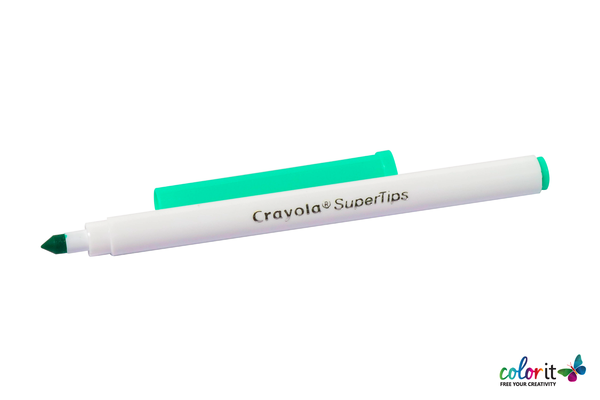
The markers are more slender than the usual coloring markers, presumably since they're made for kids. The caps are colored to match the markers’ actual color.
Looking at the body you'll see the brand, but not the color name or code. For a hundred markers with different shades, this could be a headache. You could swatch them beforehand or stick your own labels for convenience. Keeping a scratch paper nearby will be useful when you’re coloring, too.
Crayola markers are single-tipped--- it starts off broad and tapers into a fine point. Tilting the marker to a 45-degree angle creates thick strokes while using the tip at around 90 degrees creates thin lines.
Ink and Application
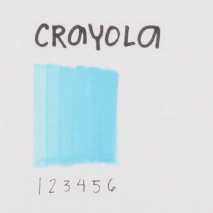 Now, for the application!
Now, for the application!
The thing with water-based markers is that they dry much slower than alcohol markers. This means they’re prone to streaking and are somewhat difficult to blend. You'll have to apply around 2-3 layers to get an even result. At best, you'll get a solid-looking output that's great if you want something cartoony or kitschy. However, if you want graceful blends and transitions, you might do better to trade these water-based markers for alcohol-based ones.
You also have to be careful when laying down your strokes. Water-based markers don’t bleed and smudge as much as alcohol-based markers, but they do damage the paper the more you add layers. During our testing, we noticed a bit of paper damage around the 4th layer, so it’s best to wait for the marker colors to dry before applying another layer. 
Another thing that we found challenging about these markers is their tips. While we didn’t have any trouble using the usual fine tips, tilting the markers to get broad strokes felt awkward in the hand.
On the plus side, though, having a hundred markers means you get a lot of variety for a very affordable price. You get a wide array of cool shades as well as warm, subdued skin tones and neutrals something you often see in a kids’ set of markers.
Our Verdict
All in all, the Crayola Supertips set offers a wide variety of colors and shades at a very affordable price point. The in-betweens and neutral shades included make a very interesting and diverse palette.
Then again, it is water-based, which means it doesn't offer much in terms of blendability and layering, two qualities you need to have if you want to take your art to the next level. Get a set if you're a beginner or are coloring with kids, but if you want to take your coloring up a notch, it's time to play leave this set with the kids and get yourself some grown-up coloring tools like alcohol-based markers.
Final Thoughts
So, there you have it: a thorough and hopefully helpful rundown of the best markers for adult coloring out there.
After all the rigorous testing and evaluation, we can say that the ColorIt markers have the best price-performance ratio out of all the markers in this list.
Don't get us wrong--- the premium markers like Copic and Prismacolor did extremely well and passed with flying colors but you gotta admit: they do have steep--- and painful---price points.
The cheaper alcohol-based markers in this list, like Bianyo and Ohuhu, had an okay performance, but their identical traveling cases and awkward barrels just didn't make the cut.
Lastly, the water-based and pigment based pens mentioned in this list were either made for calligraphy (Tombow), drawing (Faber-Castell) or for kids (Crayola).
All things considered, ColorIt's markers checked all the boxes. They blend great, they're affordable and are specifically designed for adult coloring.
Did you find this review helpful? Leave a comment below and tell us what you think!
Share this post
- 17 comments
- Tags: reviews
17 comments




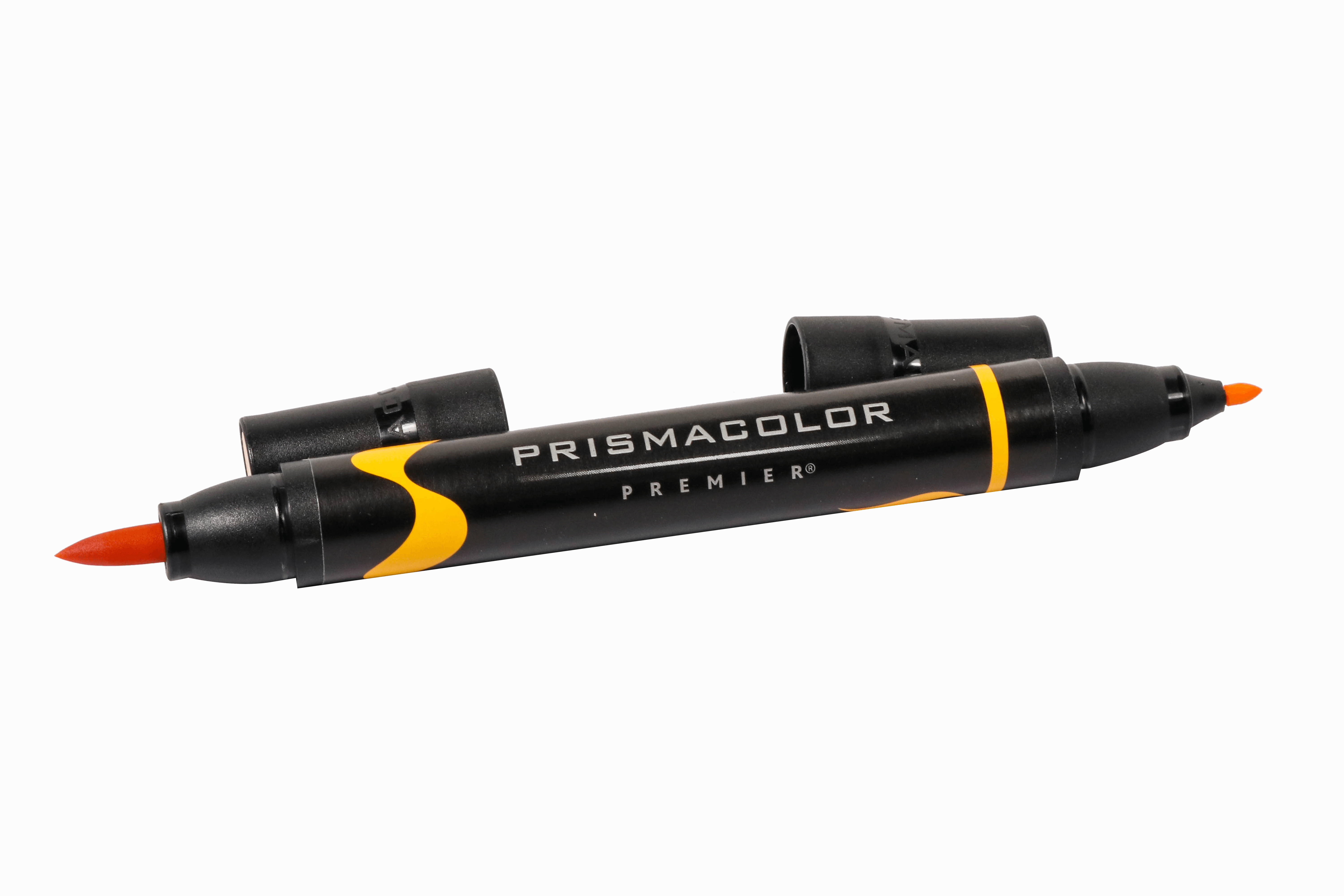


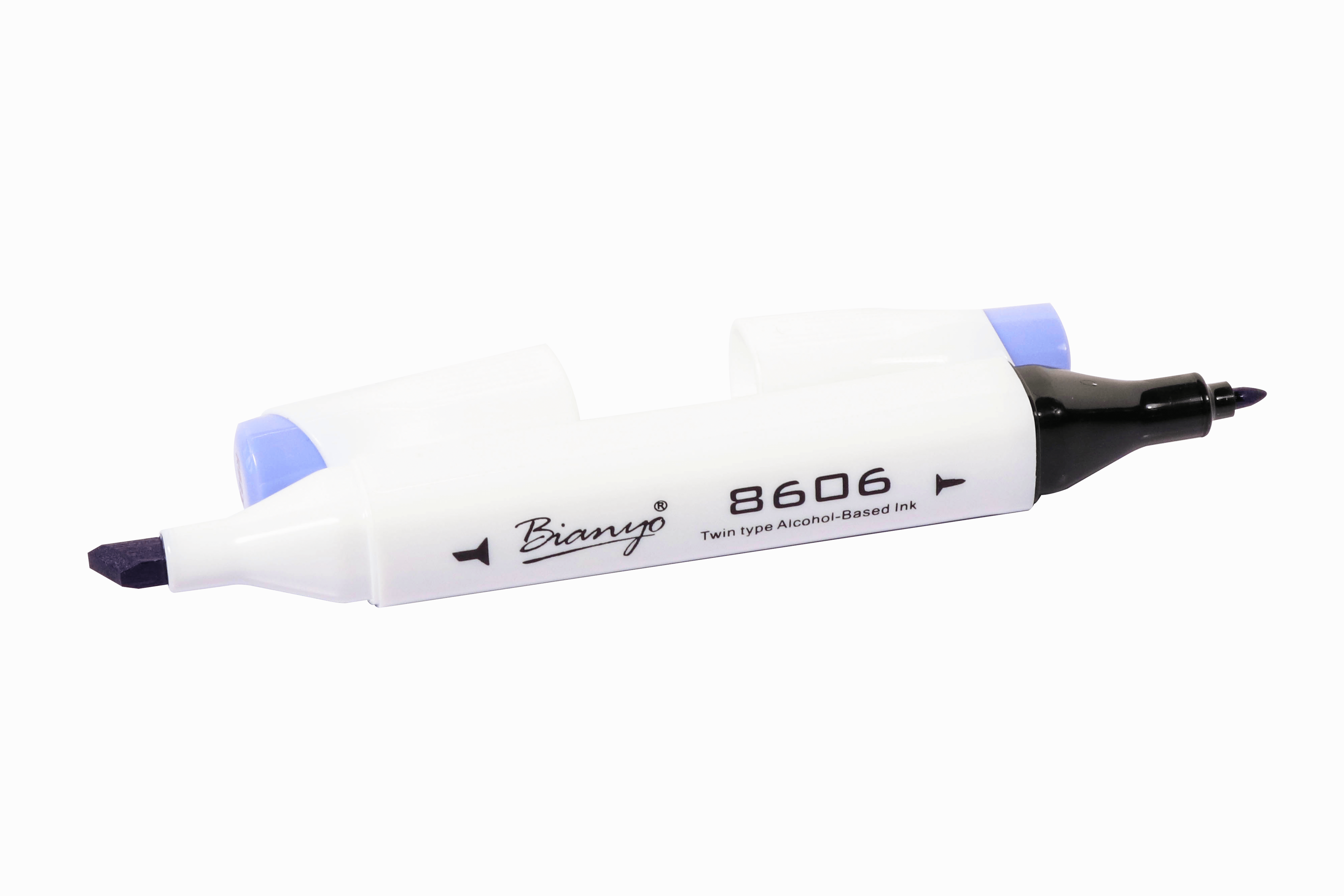



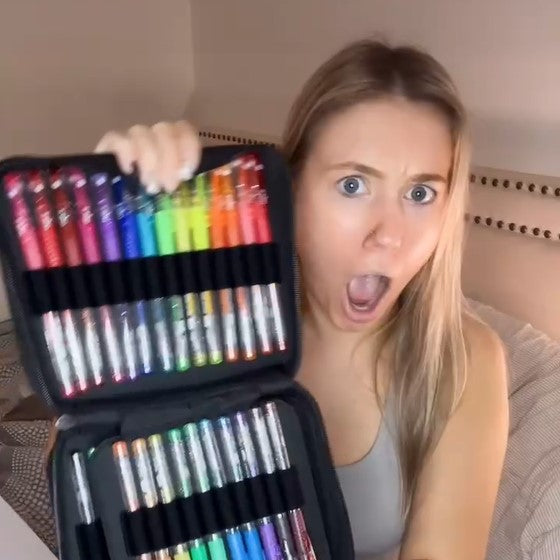
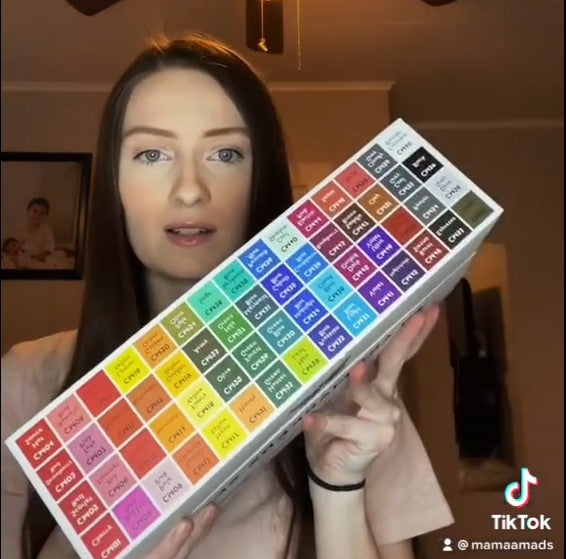
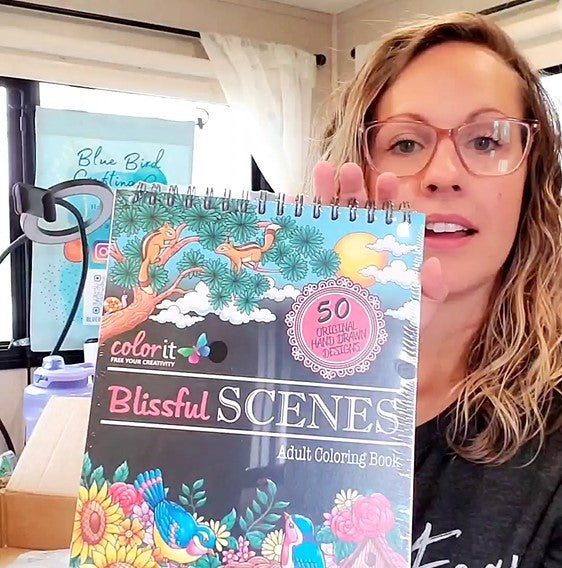
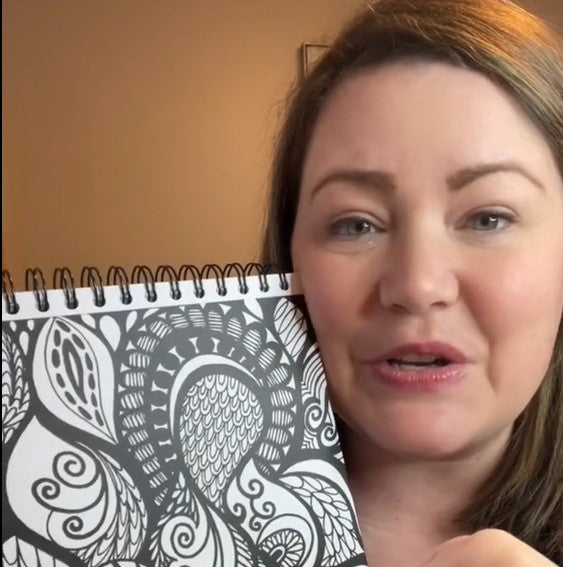



I’m sad you didn’t include the Bic markers. They’ve become a real favorite and very affordable. Leaves no damage. Vibrant colors.
Thanks for this review. I love ❤️ using my ColorIt markers for so many reasons, most of them you listed. Most importantly becuse I suffer from migraines and they do not cause my flare ups with harsh odor as a lot of others do. For the markers that I have never used and been curious about, you definitely answered so many questions about my curiosity for them and save me the trouble and expense of ordering the other brands.